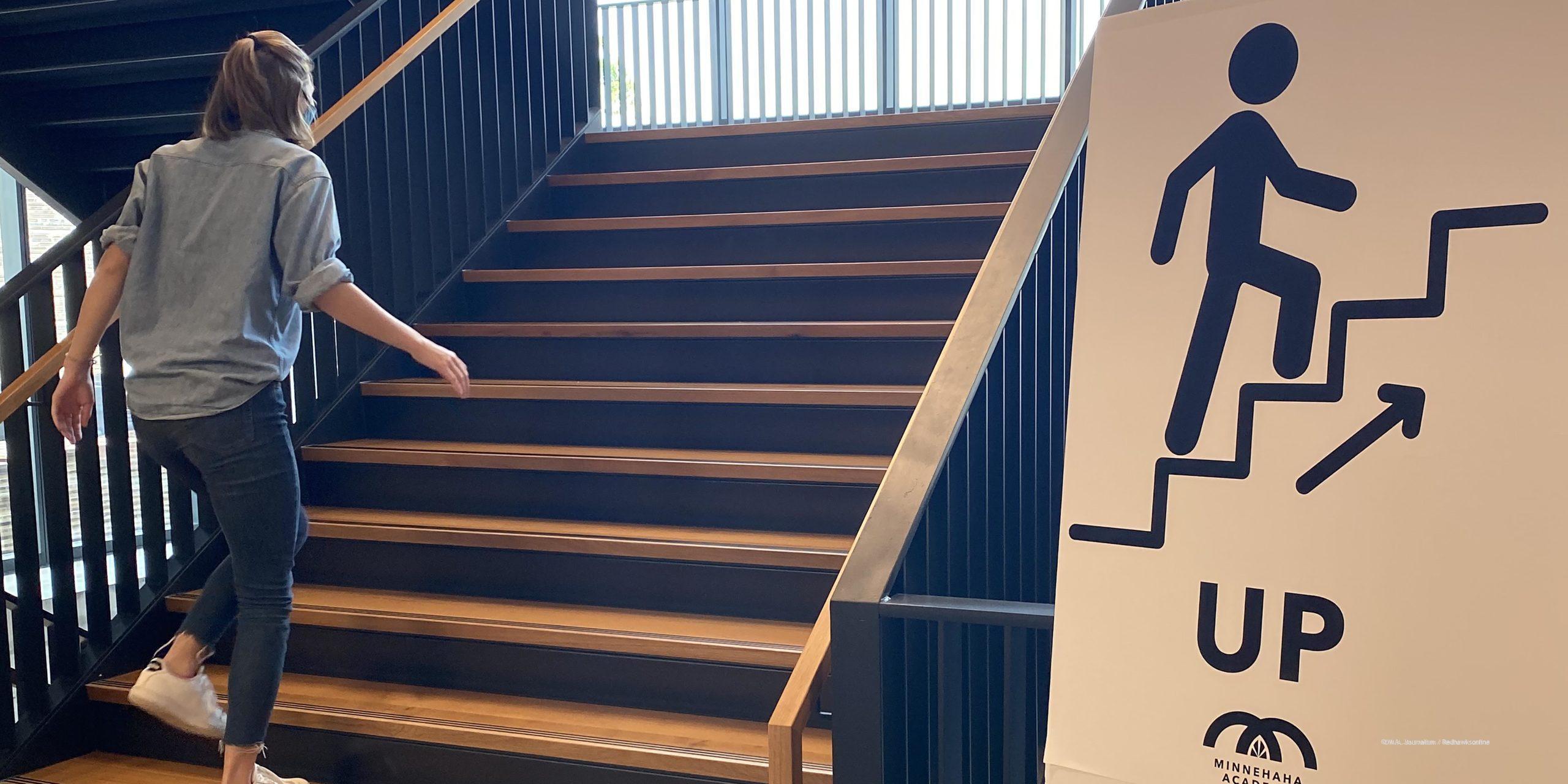What it took to prepare for in-person learning
In the mid summer heat, weeks before school was to start, Principal Michael DiNardo confronted the big question; What’s next? With the help of Maker Space Coordinator Shannon Boehm, they started out with the basics. Stepping into each classroom and surveying the space with Cuningham Group Architecture, out came the measuring tape.
“Okay, it looks like we have this six foot mandate,” said DiNardo. “We have to keep kids six feet apart from each other. What’s that look like? So really it started with science [classrooms] and we kind of went from there. Well, we’ve got one kid at a table. Okay, wait, we can do six feet by putting a couple kids over here by the sinks. We figured ‘all right maybe we can get eighteen into the class'”.
Months of planning went into the preparation for this 2020-2021 school year in order to take the highest precaution for the community’s safety and health.
Problems and questions arose one after another.
With students spread farther apart, fewer can fit into a classroom. The idea of implementing an eight period schedule emerged to keep numbers at bay. Students needed to be spread out as much as possible, which an extra period would accommodate.
Each teacher took on a sixth period in order to serve the new eight period day. Some teachers took on a seventh period, which put them into an “overload” state. Either way, teachers have a heavier workload than last year, when most had five out of seven periods to prepare for, placing more on their plate.
“It is a bit of extra work, but I think the benefits outweigh the costs,” said Latin teacher Johanna Beck. “In terms of stress, it might seem counterintuitive, but it has made this year less stressful because it allowed us to drop the traditional day.”
The additional period helps keep students from congregating in the commons during what would be an activity period. With that issue gone, lunch time still looms around the corner.
Taher, Minnehaha’s food service, asserted a plan in the summer that has worked well so far. Dining space was limited to one or two students per table in the cafeteria, four per table on the patio and social distancing in the commons, where most students end up.
“Luckily, [Taher had been] great and they’ve been really safe with what they’re doing,” said DiNardo. “And there have been no issues with lunch.”
Although, there have been comments made regarding social distancing efforts during lunch periods.
“Yeah, I mean, kids need to sit further apart from each other in lunch, that’s for sure,” said DiNardo. “That’s the one thing.”
With higher-risk situations like this in mind, the school added in a unique air conditioning unit to combat this potential issue.
The school placed a bipolar needlepoint ionization system in the air conditioning and heating systems in the Upper and Lower campus to inhibit virus particles from flowing as freely.
“Basically what it does is it adds charges throughout the building, through the air systems,” said DiNardo. “You know from chemistry that if you have these charged particles they’ll be attracted to each other. So it charges the virus particles up, so they get attracted to each other and make bigger particles. Then those bigger particles can be caught by our filters. So, it enables more of the virus particles to be filtered out of the air. Whereas if you didn’t have that, the virus particles are so small that they would pass through any filter that we have.”
The school has also taken simpler precautions, such as placing hand sanitizing stations around the school and sanitizing desks in between use.
With the new in-person plus digital learner dynamic and social distancing rules, teachers have had to reinvent their teaching methods.
“[My teaching style has] changed a bit but it hasn’t changed my style and my personality and the way I interact with the students,” said Beck. “It’s just been a different vehicle to get there”
Beck has turned to programs such as Peardeck, an educational application, to interact with in-person students and digital students simultaneously. Usually, she would not be using screens very often to teach her classes, but recently she has had to turn to technology.
Along with the rest of the language department and some of the arts department, Beck uses a microphone headset during class so her students can hear her more clearly and easily.
“Karen Lutgen [choral director] she’s like, ‘oh I found this microphone’,” said Beck. “She did the research and told us. Then our whole department got the exact same microphone she did. [This process] is very collaborative. One person figures it out and shares it, and then the people who it’s useful for, pick it up.”
Collaboration has been a vital part of this process ever since the start. This has truly been a collective experience for those involved.
Thousands of hours of planning have gone into making in person learning possible this year by the faculty, staff, teachers, architects, Taher employees and dedicated custodians. The gruelling hours have caused great stress and complications, but for most, the results are worth it.
“It’s so worth it to be able to engage and communicate with my students,” said Beck. “It is very clear to me why I’m doing this. It’s so worth it. So worth it.”

